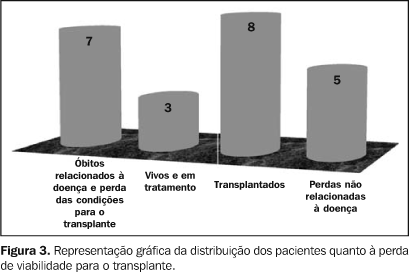OBJECTIVE: To evaluate the results of hepatocellular carcinoma arterial chemoembolization in cirrhotic patients awaiting liver transplantation. MATERIALS AND METHODS: Twenty-three cirrhotic patients with hepatocellular carcinoma awaiting liver transplantation were submitted to multiple sessions of chemoembolization using mitomycin C and lipiodol. A prospective evaluation of the following factors was performed: a) serum levels of alpha-fetoprotein; b) tumor size; c) maintenance of the viability criteria for hepatic transplantation; d) degree of liver dysfunction. RESULTS: The mean serum levels of alpha-fetoprotein were reduced by 43% during the first 13 months. The mean tumor size, as measured by the long axis, after a mean follow-up period of 13.5 months was 3.2 cm, which is considered stable for the period according to the World Health Organization criteria. The mean survival rate was 14 months. CONCLUSION: In this trial, pre-transplantation use of chemoembolization in combination with an adequately chosen therapy showed few complications and contra-indications as well as a considerable anti-tumor efficacy. Despite the fact that the adopted therapy increased survival rates in comparison to historical evolution data in hepatocellular carcinoma, this increase had not the same dimension if the median waiting time for transplantation is taken into consideration. Therefore, other strategies need to be associated to either make survival rate longer or to reduce transplantation waiting time.
Hepatocellular carcinoma; Chemoembolization; Lipiodol






